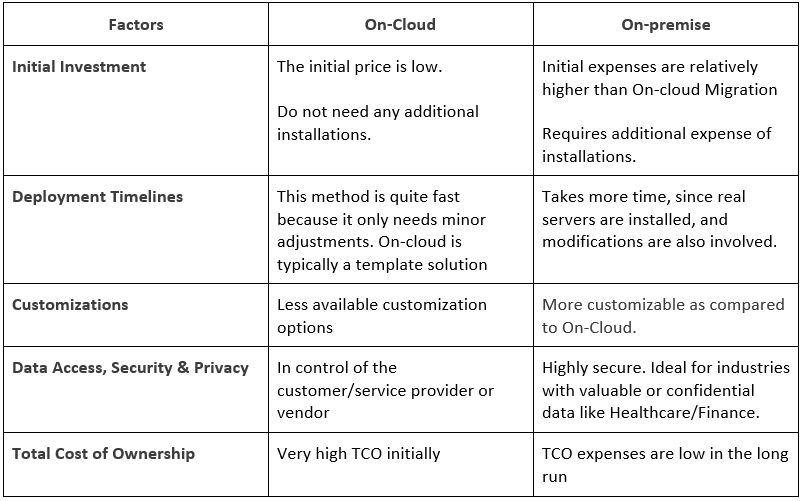SAP S/4HANA Migration: Greenfield Vs Brownfield Vs Hybrid
29-Jun-2021SAP users have to make a vital choice within the next 3-4 years. SAP will no longer sustain SAP ECC, a widely adopted Enterprise Resource Planning Solution. It implies that clients will need to consider migration to SAP S/4HANA.
All SAP subscribers will need to migrate if they want to keep working with a well-supported ERP solution. However, for SAP Implementation Companies who desire to install SAP S/4HANA, there are several opportunities to explore.
Currently, users can easily migrate to the newest SAP platform by three ways of implementing the latest version. They are: Greenfield, Brownfield, and Hybrid approach.
These migration options depend heavily on a company’s approach and adoption mindset for migration, which involves several factors. So, let’s see how these three implementation techniques differ from each other, and then perhaps you can pick which one is the best for you.
Greenfield SAP S/4 Hana Migration Strategy
The Greenfield method is working as a reboot action. The Greenfield migration approach involves the comprehensive re-arrangement of the SAP operations and business processes of a company from the old version to the new version.
Advantages
- Declutter the mess: The best approach to launch with SAP S/4HANA is undoubtedly to deploy a Greenfield implementation. Some firms have established existing systems and processes that are difficult to handle and migrate, because they have extensive customized code, additional ad hoc solutions, and various development setups. You can only wipe away this unmodifiable mess with the Greenfield implementation approach.
- Industry best practices: SAP S/4HANA has integrated best practices in the new version, with this approach you can easily adopt them. This will ensure that firms develop and enhance their operations when they move to the new system.
- A chance for re-configuration/optimization: It brings up an entirely new range of opportunities to redefine and repair the system’s flaws and re-developed it from scratch. Greenfield gives you a chance to put your “learned lessons” from previous/existing systems into action.
Disadvantages
- Strategic change Implementation: Proper management of the significant shift to the new version is necessary. It is because people might be unwilling to leave their comfort zone and adapt to new adjustments.
- High Cost of Migration: The Greenfield SAP Migration technique is more expensive than the other approaches.
- Lengthy Timeline: The implementation period in large corporations is significantly longer than Brownfield or Hybrid implementation.
Brownfield SAP S/4 Hana Migration Strategy
While Greenfield is a total re-configuration model, the Brownfield method is more like just upgrading or rehabilitating your existing SAP ERP system and processes.
Advantages
- Multitask: You may upgrade to the SAP S/4HANA while still transacting in your current SAP operations and services.
- Use what you like from your system: It transfers your ECC system to SAP S/4 HANA, picking up certain SAP S/4HANA features. You may also maintain your tested and proven operational techniques and personalizations to administer your data.
- Cheap: It is considered the cheapest SAP S/4 HANA implementation method.
- Shorter Timeline: The Brownfield implementation techniques take much less time than the Greenfield approach.
- Less interruption in business: As most of the existing processes remain intact in Brownfield implementation, it has no significant impact on end-users and company transitions.
Although it may seem that the Brownfield implementation strategy has more advantages than Greenfield, it also has some significant downfalls.
Disadvantages
- Old faults are hard to wipe away: You cannot re-engineer the processes because the existing functions are adopted just as they are. So, if you find a flaw in your system after it gets migrated, it might be hard to get rid of it later.
- Compatibility: The Brownfield migration process is not suitable for advanced technologies for future use. It will be more cost-efficient to use a standardized implementing procedure now than regretting later.
- Technological barriers: it may face more technical issues than the Greenfield approach.
Hybrid SAP S/4 Hana Migration Strategy
A hybrid strategy blends features of both Greenfield and Brownfield SAP S/4 HANA processes.
You can duplicate and delete your current data, maintain settings and customize strategies and codes as needed and then migrate it into SAP S4 HANA, flawlessly. The Hybrid migration process is easier because it enables you to modify your parameters. However, you will need to reload the data, which is a major drawback.
A Hybrid strategy can be quite handy if a corporation has plans to make subtle alterations to its new version. It is because many of the items you constructed get reused and in a shorter time. As the new program runs alongside the old system, it takes only a few hours instead of several days to get the job done.
On-Cloud versus On-Premise SAP S/4 Hana Migration
One of the prime factors to consider while choosing the migration process is whether to go for the “On-Premise” or “On-Cloud” database.
In On-Premise, the company manages everything, including the hardware, cybersecurity, servers, connections, and more. And the On-cloud database can run without additional device installation. It’s a centralized Service Software (SaaS) that manages all of your operations.
Here are some key differences between the “On-Premise” or “On-Cloud” database:
SAP for a sustainable future!
SAP S4 HANA Migration is a considerable investment for any organization but is one of the main requirements for future-proofing the IT landscape and therefore has become the main objectives of administration and management. We all know that the migration to SAP S/4 HANA is inescapable since the older version is going out of support and the organization will soon need it to close the gap between other enterprises in terms of technological advancement to maintain competitiveness.
It might be a challenging procedure, but it is extremely necessary to choose a suitable SAP S/4HANA implementation strategy for your business even though there may be several obstacles on your migratory path to the new SAP S/4 HANA.
The best part is that if you grasp the benefits and decide to invest in migration, there are multiple possibilities to choose from to migrate successfully to the latest version of SAP S/4HANA.













